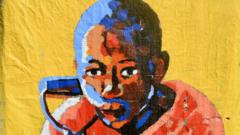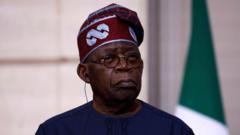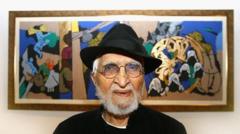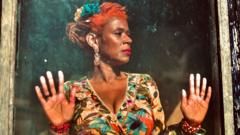This is one of the greatest things to have happened, not only to my art, but to Nigerian artwork, 93-year-old painter and sculptor Bruce Onobrakpeya says as he looks around the rooms at the Tate Modern, one of London's premier art museums.
Onobrakpeya is among more than 50 artists whose work is going on show at the gallery on the south bank of the Thames as part of Nigerian Modernism, an ambitious presentation that spans a period from 1910 to the 1990s.
Nigerian Modernism represents a significant turning point for Nigerian artists, showcasing their unique perspectives through diverse mediums, combining indigenous techniques with contemporary styles. The exhibition illustrates their journey, from a British colony to an independent nation, and the socio-political turmoil, including the Biafran war, that shaped their artistic expression.
Walking through the Tate's lofty rooms, pieces that mix traditional Nigerian craftsmanship with modern techniques invite viewers to reflect on the past while imagining future possibilities. Artists like Muraina Oyelami, whose works depict personal and national narratives, express a shared sentiment of pride and connection to their heritage.
Curator Osei Bonsu notes the collective spirit among the artists, asserting that they are not only creating art but also redefining what modern art can embody. Each piece resonates with a deep-rooted cultural significance, aiming to inspire future generations toward sustainable artistic innovation.
The exhibition runs until May 10, 2026, promising to elevate the visibility of Nigerian artists on a global scale, and leaving viewers with a message of hope and determination for the future.




















